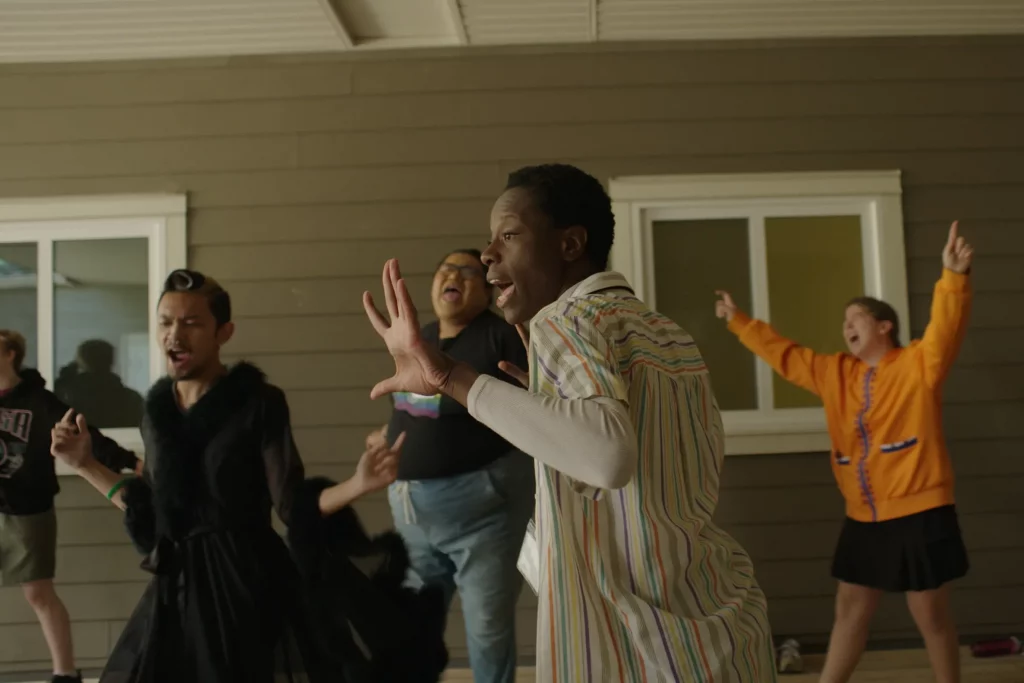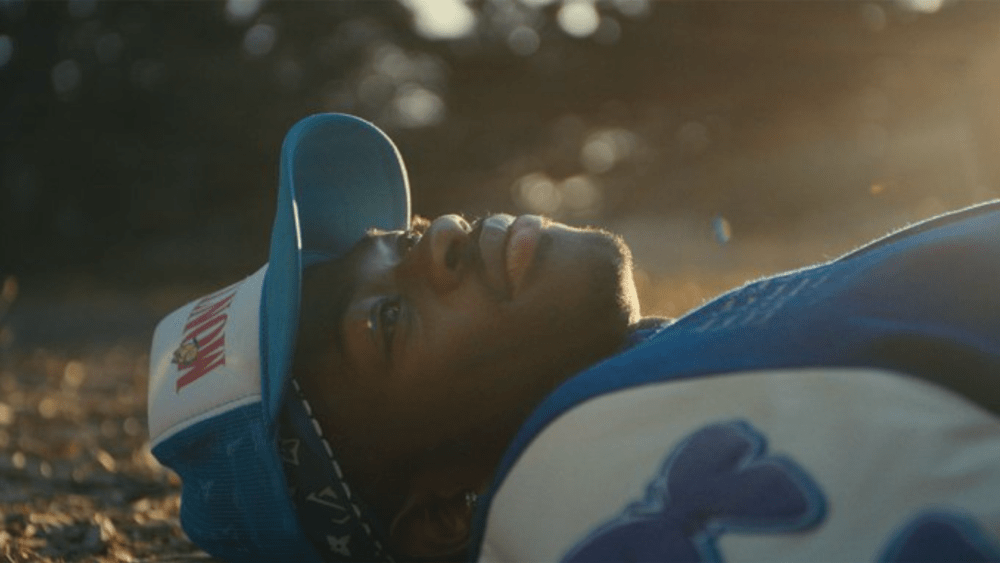Documentaries place music and youth in the spotlight this film season
Youth and music docs in the spotlight among new movies
Reviews: “Summer Qamp,” “Long Live Montero” and “In Restless Dreams” debuted at the Toronto International Film Festival.

In the annual cinematic celebration, The Toronto International Film Festival screens the latest documentaries and movies from talented and emerging filmmakers from around the world. The 48th annual film festival took place from September 7-17.
This year, filmmakers debuted new commentary films including Alex Gibney’s music documentary In Restless Dreams: The Music of Paul Simon, Lil Nas X’s Long Live Montero, and Jen Markowitz’s coming-of-age film Summer Qamp. TIFF also featured several news films.
Heartwarming journey into Alberta’s queer haven in “Summer Qamp”

Summer Qamp, directed by Canadian filmmaker Jen Markowitz, premiered at the Toronto International Film Festival this year. The documentary film chronicles the lives of campers in the queer-centric Camp fYrefly in rural Alberta, Canada.
Often the only queer stories that are shared are those of strife, yet Summer Qamp disrupts this narrative with peace and authenticity. The fulfilling feature presents laughs, cries and a sense of love amidst worldwide turmoil. In the documentary, Markowitz illustrates the communal intricacies of queerness and the nature of support vital to the community.
Immediately, Markowitz establishes a sense of safety affirmed by the near-total queer cast and crew. The students discussing camp and their queerness evoke a certain familiarity with their personal vulnerability. The diary-room-style scenes, reminiscent of those in reality competitions, portrayed the children powerfully in their own voices.
Visually, entering these rooms was like stepping into the comfort of a childhood bedroom – grasping that nostalgia proved compelling. Markowitz’s safe space intrinsically connected them to the campers. Three children attended the festival, one noting the comfort they cultivated.
They created a sense of family and interconnected friendship among the campers and crew – wherein nicknames refer to one another. Executive producer Michelle Mama is known simply as “Mama.” The support structure is mimicked by Camp fYrefly. Rather than a division of adults and children, everyone coexisted to curate a family defined by rapport, love, and care.
In tune with the collective, cinematographer Lulu Wei immersed audiences in the experience. I was in the trees. I was petting a horse. I was lip-syncing around a campfire with the campers.
To say the music and sound bites conveyed a traditional summer camp is an understatement — viewers became flies on Camp fYrefly’s wall.
Wei observed the students, giving them space yet showing the intimacy of their connections. One student comes out with the support of friends, and another dyes their hair a radical pink.

Quite evocatively, Wei captures not only the summer camp but also the students’ experiences. The audience can grasp the campers in their entirety, not merely their personas within the comfortability of camp. Even when the subjects shift sour and severe, the backdrop of the serene woods and friendship grants solace in a world challenging their existence.
The cinematography was pivotal in creating the connecting threads of self-celebration. Summer Qamp left me nostalgic for a summer long gone; a summer I never had.
Furthering the depiction of the campers themselves, the documentary almost wholly excluded parents. Instead of illustrating family dynamics, the film centers on the children in a way that amplifies queer youth.
Camp fYrefly normalized the existence of the queer youth it followed. More than that, it was a lifeline and exploration into individual queerness. Summer Qamp provides space to understand queer youth on their own terms.
— Brandon Wallace
“Long Live Montero” showcases Lil Nas X’s coming-of-age
journey to superstardom

It’s been five years since Lil Nas X took the world (and his horse) to the “Old Town Road” and shook the definition of music genre to its core. While his controversial country rap track dominated the airwaves, “Old Town Road” was only the beginning of the road for the artist.
Since coming on the scene and out to the world, the 24-year-old “Industry Baby” has continued to shatter the glass of social norms, troll haters and release smash hits.
His latest project, the Long Live Montero music documentary, premiered at the Toronto International Film Festival in September. Lil Nas X and directors, Carlos López Estrada and Zac Manuel gave the typical inside look on a tour and the not-so-typical look on what it means to be a Black queer pop artist assimilating to wealth and fame while on a journey of self-discovery.
Rebirth, Transformation, and Becoming are the sections the film is divided into. While these words aren’t precise synonyms, they include a commonality in their general definition — change. The film makes clear the artist has gone through and is still going through change since his youth in South Georgia and losing his grandmother. A loss X says he hadn’t felt before and found solace in making music.
With platinum-selling albums and a sold-out tour, it’s clear that music was not only meant to get him through his lowest times but also meant to catapult him to his higher purpose. At the height of his breakout hit, “Old Town Road,” X decided to publicly come out as gay – a decision his father thought would send him to hell. While the film shows their relationship has progressed since, this is an unfortunate tale many of the stars’ LGBTQ+ fans can relate to.
The ”Call Me By Your Name” singer’s older brother, Tramon Hill found X to be an inspiration, revealing in the documentary that he is bisexual. “He helped me be real with myself,” Hill said. “My brother really opened doors for a lot of people.”
While he’s inspired generations past and present, X shares his personal struggles with internalized homophobia and his place in the world. He became more comfortable with his identity while spending time with his background dancers, a group of mainly queer men of color. He’s found a home in them akin to any Black queer kid who sought refuge in the ballroom scene back in the 80s.
Even with finding a community for the first time, the artist still battles the lone duty of being famous and being Lil Nas X. This is depicted in the film when X is filmed running away to explore a city by himself seeking a sense of normalcy while on tour.
The last scene of Long Live Montero shows the superstar in a butterfly garden. He taunts the butterflies, pleading that they will ruin his documentary if they don’t make an appearance. The screen then pans to the butterflies flying in the trees.
This ending scene encapsulates the film, which follows the journey of a Black queer star, still blooming while juggling self-confidence, comfort in his queerness and the complex side effects of being rich and famous. Like Little Richard, Sylvester, Prince and even Frank Ocean before him, Long Live Montero isn’t a new story, but it is all his own.
— Rayshaun Sandlin
Struggling to stay awake through
“In Restless Dreams: The Music of Paul Simon”

For more than six decades, Paul Simon has stood as an icon of fame, fortune, and folk-rock music. From his debut on “American Bandstand” at the age of 15, to his historic performance at Central Park in 1981, to headlining South African musicians during his creation of Graceland in ‘86, his career has been nothing less than newsworthy. Just ask him!
Most recently, the musician was the focus of a music documentary directed by Alex Gibney. The 219-minute-long documentary, In Restless Dreams: The Music of Paul Simon, was a self-branding advertisement wrapped in a documentary’s ribbon.
Three and a half hours is a commitment for any movie fan. Even with 60 years of notable material, Gibney’s In Restless Dreams was too long for an audience member to watch.
It’s entirely possible that post-TIFF audiences needn’t concern themselves with this. The documentary is split into two main “verses.” Verse 1 focused on Simon and Garfunkel, while Verse 2 delved exclusively into Simon’s solo career. It’s unclear whether the documentary will ultimately be divided into a mini-series, or if the audience will be expected to watch it all in one sitting. Fans may be much more appreciative of the material if there are a few bathroom breaks factored in.
The second inadequacy of the documentary is a common one for superstars with a new work to promote. In Restless Dreams oscillated between classic Simon and Garfunkel chart-toppers and short recordings from Simon’s new 33-minute-long track, “Seven Psalms.”
Simon did appear in Toronto for the talkback, which received a standing — actually, two standing ovations. Much to the audience’s dismay, Simon missed the first and not so subtly asked everyone to stand again.
During the talkback, Simon shared with the audience that not only has he not watched the documentary in full, but he has refrained from listening to any of his new releases since they ended filming. As an audience member who spent the time and resources to do just that, hearing it from the artist felt like a discourtesy.
This is not to say there weren’t fabulous moments within the doc. The music was haunting, and the film was riddled with great quotes and iconic scenes from the last 80 years. From footage of Paul Simon recording “Sounds of Silence” on his parent’s bathroom floor to showcasing the humanitarian aid he completed while creating Graceland, it would be ignorant to deny Simon’s enduring influence on 20th-century music.
The documentary might be great for the fans itching for the new release, but for the majority, it felt less like a tribute to Simon’s mark on the world, and more like a final attempt to monetize his legacy.
— Jeannie Jedlicka
